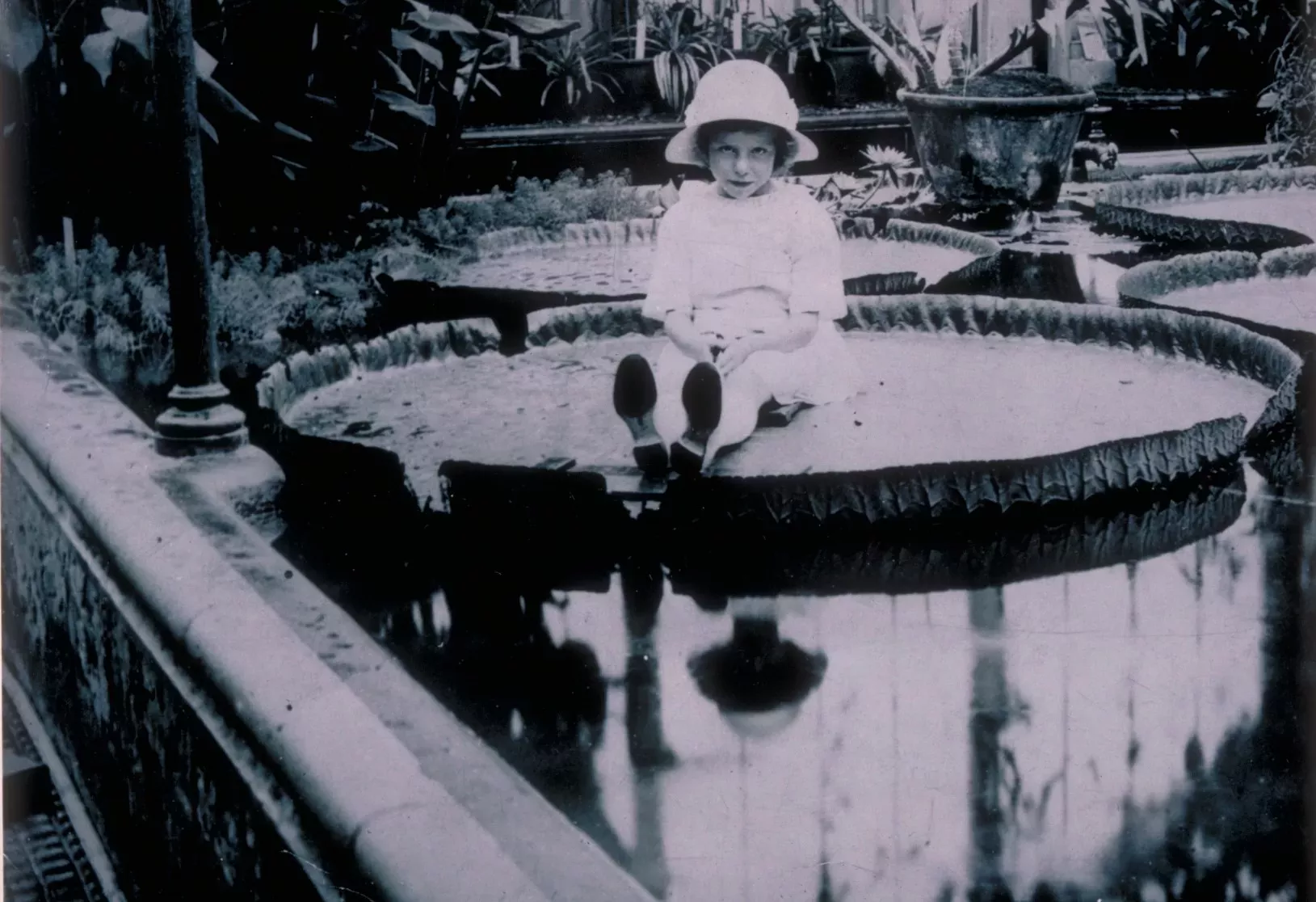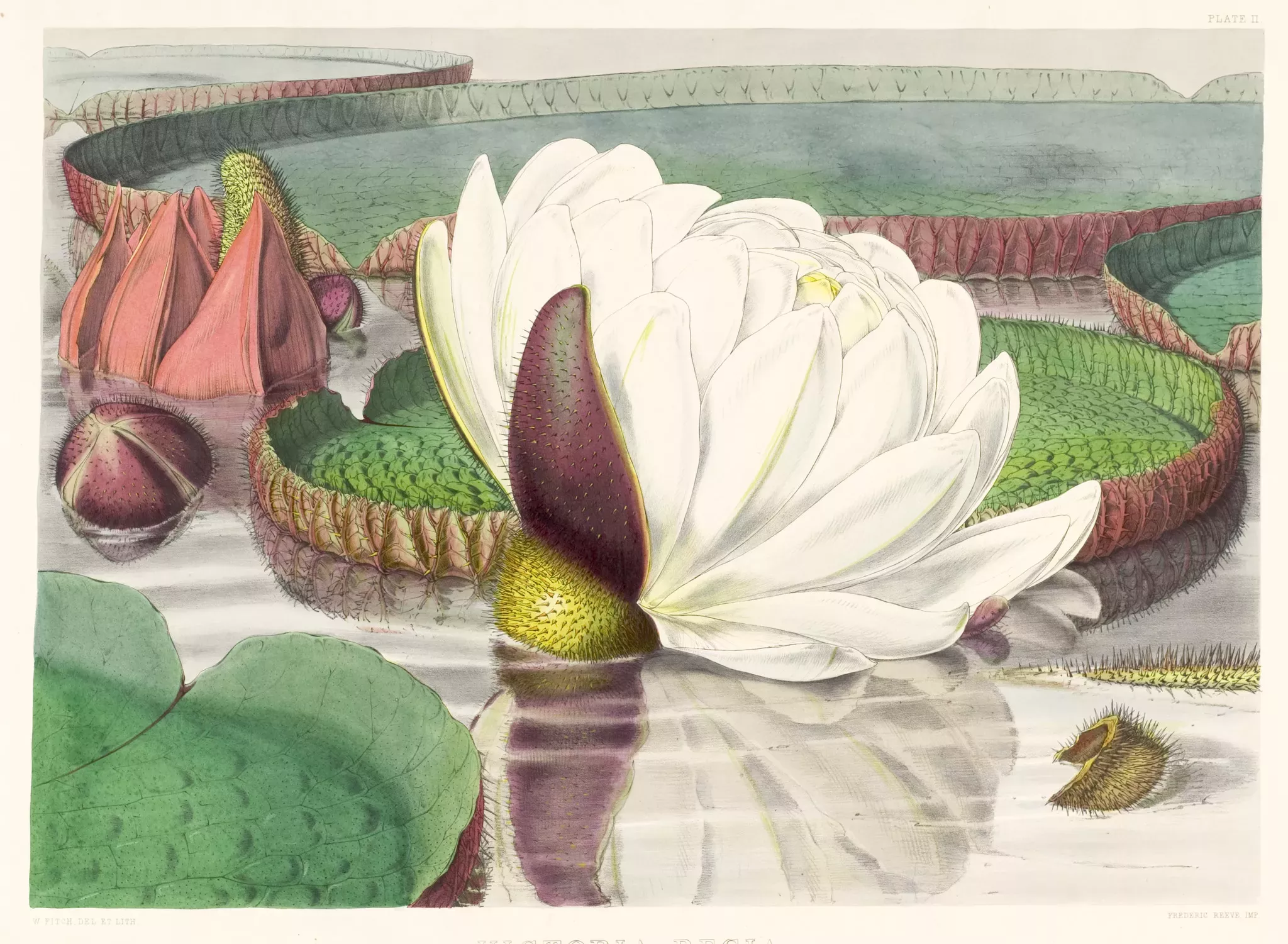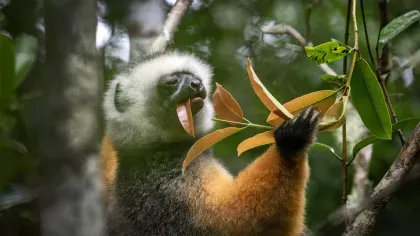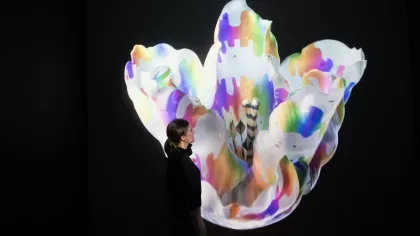14 November 2014
Victoria amazonica - inspiring a nation
The history of the Victoria amazonica - water lily has captured the imagination of Victorian botanists, plant hunters and even Queen Victoria herself.

A water lily fit for a queen
Please note that the following blog post is significantly informed by 'The flower of empire: an Amazonian water lily, the quest to make it bloom, and the world it created' by Tatiana Holway, published by OUP in 2013.
Of all the 832 paintings in the Marianne North Gallery it is a painting of the Victoria regia, now known as Victoria amazonica, that is attributed as painting 1. This plant, the largest of all water lilies, captured the imagination of many Victorian botanists and plant hunters but also the general public and Queen Victoria herself.
In 1837, the inaugural year of Queen Victoria’s reign, the Victoria amazonica had been discovered in a new British colony in South America, British Guyana, by Robert Schomburgk who was travelling under the employment of the British government. The plant was described as growing an inch an hour and its flower was a foot in circumference. Having been identified as a new genus by John Lindley it was named Victoria regia, the Queen of Aquatics, after the new British queen. It was an emblem of the new monarch whose imperial grandeur ruled over many domains all over the world. In a Victorian age where steam and rail dominated, the quest to cultivate this flower captivated the country and the world.
An incredibly popular story
Having received preserved specimens of the plant and its flower Lindley published an exclusive folio, consisting of 25 copies, of his work on the Victoria amazonica in 1837. This was reserved for the social and scientific elite but this was eclipsed by the story of the specimens of the Victoria amazonica arriving in Britain being reported by a penny weekly, they picked up the story with the headline ‘A Vegetable Wonder’, another chose the headline ‘GIGANTIC FLOWER – NEW DISCOVERY’. The story of the Victoria amazonica captivated the scientific community and the public, with the story of the flower selling on a par with the Charles Dickens’ serial The Pickwick Papers.

Victoria amazonica and Kew
Over many years there were several attempts to bring the seeds of the Victoria amazonica back to England, and to Kew, in the hope it could be culitivated to produce a flowering water lily. There were failed attempts in 1846 and 1848, using different methods of packing the seeds for travel in order to improve the chances of flowering. The first of four successful consignments, the seeds had travelled in clean water and arrived in February 1849. By the end of March Kew had six plants and by the summer it had fifty but it was at Chatsworth where the first Victoria amazonica flowered in England. The gardener Joseph Paxton had prepared for its arrival by building a heated tank in the Great Conservatory and this is where it finally bloomed in November 1849, the first flower was given to its namesake Queen Victoria. In the following year, June 1850, the first flowering of the Victoria amazonica happened at Kew and it continued its floral display up until Christmas that year.
The appetite for this famous water lily intensified. Designers were inspired by the distinctive shape using it to decorate and shape mantelpieces, chandeliers and many other household fittings. It was said that the Victoria amazonica inspired the design of the Crystal Palace at the Great Exhibition, held in London in 1851. The addition of the Victoria amazonica, along with the new easy omnibus ride bus from city and people’s desire for fresh air, meant that admittance to Kew rose to 240,000 in 1851; this was a significant increase from 15,000 visitors a year in 1844.

Walter Hood Fitch's drawings
Kew Director Sir William Hooker was one of several authors who took advantage of the public interest in the Victoria amazonica. In 1847 he devoted the first issue of Curtis’ Botanical Magazine that year entirely to this plant and in 1851 published a slim folio of Walter Hood Fitch’s lithographs. Fitch illustrated all the stages of the lily’s flowering and provided the most authoritative history of the Victoria amazonica to date. Marianne North painted her example of the Victoria amazonica not during her famous travels but in London ‘from [Walter Hood] Fitch’s splendid illustrations...assisted by the memory of its magnificence in many tropical gardens’ having seen this great water lily in a garden in Singapore ‘in full bloom’. In 1879, Joseph Hooker approached the Prime Minister Benjamin Disraeli over a pension for Fitch. Disraeli hesitated but after being shown Fitch’s lithographs of the Victoria amazonica he changed his mind and in 1880 Fitch was granted a pension for £100 a year from the Civil List.
The Victoria regia was renamed the Victoria amazonica in 1901 after the death of the queen. It is still grown at Kew today and can be seen in the Waterlily House in the summer months.
Joanne Yeomans
- Gallery Assistant -


